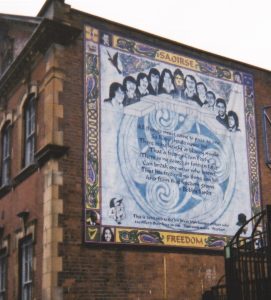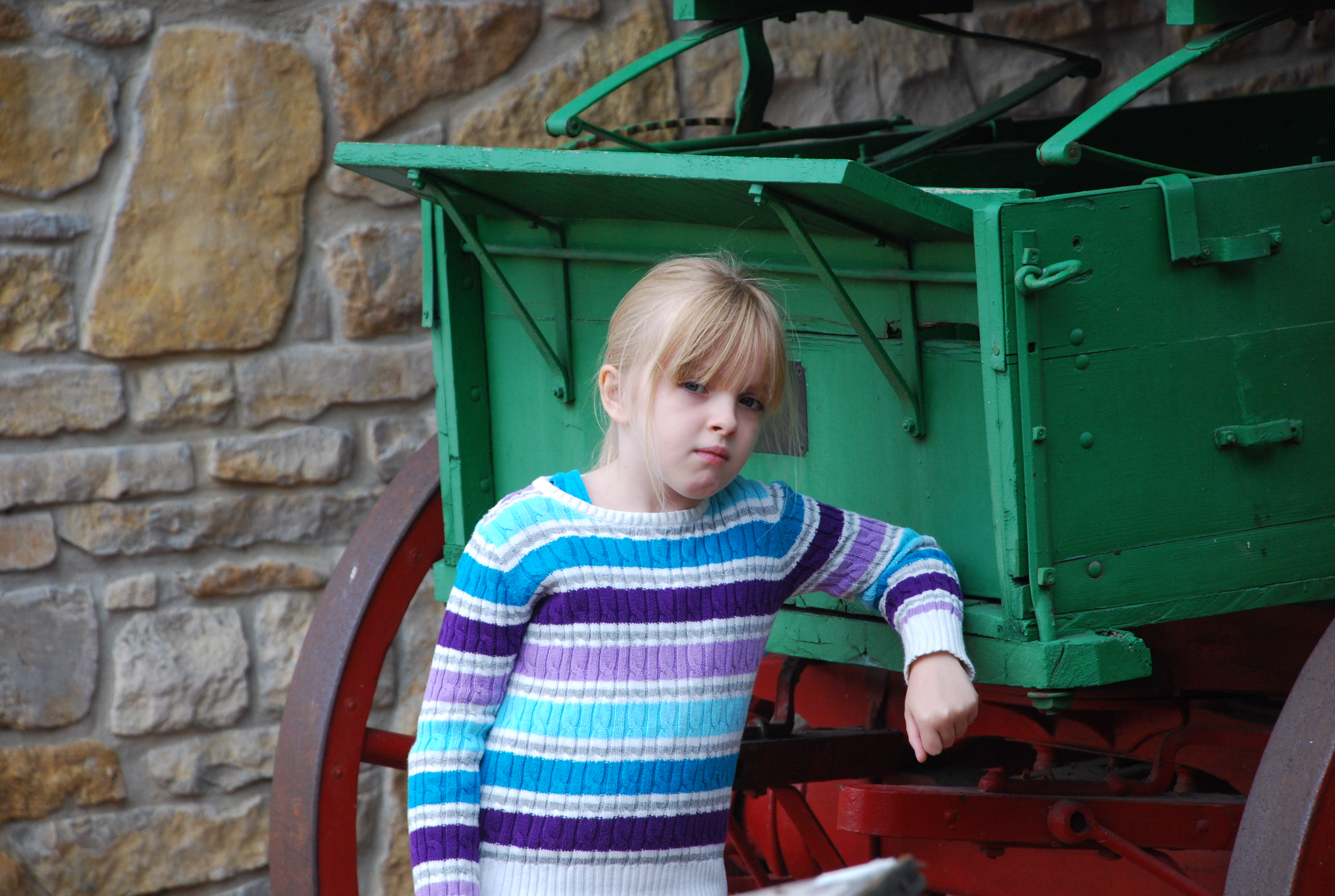Do not attend a hate rally! Instead, according to the Southern Poverty Law Center in 10 Ways to Fight Hate you should, “Hold a unity rally or parade to draw media attention away from hate.”
Rallies and marches held by the Ku Klux Klan and other hate groups are protected under the First Amendment. If we are able to stop one group from gathering, then what groups would be prevented next? Rather than risk losing our rights under the First Amendment, “our efforts should focus on channeling people away from hate rallies.”
The only thing worse than a mob of hateful, shouting people, is two mobs of hateful, shouting people! The problem with facing down the hate-mongers is that when two groups are pitted against each other in these ugly face-offs nobody wins. Instead, sectarianism may be encouraged to grow.
Wikipedia defines “sectarianism” as, “a form of bigotry, discrimination, or hatred arising from attaching relations of inferiority and superiority to differences between subdivisions within a group. Common examples are denominations of a religion, ethnic identity, class, or region for citizens of a state and factions of a political movement.” Several examples of sectarianism around the world are listed on the page. Conspicuously missing is the United States. Folks in the US have believed themselves to be free of sectarianism due, in part, to our exceptional constitution. But racial and political sectarianism are clearly demonstrated by the events in Charleston, VA this August, 2017. This is not the first time Wikipedia has made a mistake, and why I’m referring only to their definitions.
According to Assistant Professor of Law Khaled A. Beydoun, writing for Al Jazeera in 2014, “American sectarianism is nurtured by two complimentary myths. The first holds that, ‘racism is individual and aberrational’, stripping political, economic, and legal structures from any responsibility in perpetuating racial inequality.
“The second myth contends that these very structures are ‘colour-blind and objective systems, which function without racial bias’. Together, these myths not only caricature the meaning of racism, and vastly narrow its scope, but more importantly, conceal how government structures continually reinforce the US’ racial sectarianism.”
Sectarianism is encouraged by demagogues. Wikipedia defines a demagogue as “a leader in a democracy who gains popularity by exploiting prejudice and ignorance among the common people, whipping up the passions of the crowd and shutting down reasoned deliberation. Demagogues overturn established customs of political conduct, or promise or threaten to do so.”
Demagogues incite disputes and violence by words and actions that demonstrate to their supporters that violence is acceptable and desired. In his book, Mein Kampf, Hitler recommended physical violence as an effective way to manipulate groups of people. “Hitler intentionally provoked hecklers at his rallies so that his supporters would become enraged by their remarks and assault them,” according to Patricia Roberts-Miller, in her article “Democracy, Demagoguery, and Critical Rhetoric.”

Rallies and marches aren’t the only way hate is spread. Statues that commemorate violent or divisive actions or people also keep hate alive.
Germany tried to erase their hate-filled past unsuccessfully, but they did manage to get hate symbols out of the public square. It is illegal in Germany today to display Nazi symbols. But Germany’s “enduring confrontation with the past” (as Yuliya Komska puts in the 8/17/17 Washington Post) requires acknowledging their history openly and frequently in hopes of preventing its reoccurrence. Town squares should display our current values; museums can display our checkered history.
Art and graffiti are other ways conflict and hatred are communicated. When I visited Belfast in 2006 I went for a Black Taxi tour. I took the political tour. I wanted to go in the afternoon, but when I called to make the arrangements I was told, “The gates are closed so we won’t be able to go then. There’s a march.”

The Protestant Orange were marching, still celebrating the victories of Cromwell (dead hundreds of years), and the Catholics were mourning their dead and reacting in their own ways to keep the hate alive. The “gates” (military barricades) were closed, literally dividing the city in an effort to reduce violence.
The tour consisted of me and the tour guide—a taxi driver born and raised in the conflict. He had a great knowledge of “the Troubles” and did his best to remain politically correctly in the middle, however the murals speak for themselves, and anyone with eyes would be forced to draw the conclusion that the pro-Brits, or Loyalists, are a violent lot.
As he pointed out, the current conflict in Northern Ireland is mostly created by the “working classes.” Others have a vested interest in prosperity—meaning tourism and business travelers & investors who do not appreciate violence or extremism.
The cabbie said there had been no “serious conflict” for almost 6 years, but 2 years ago, while business investors with deep pockets were in town, another Orange march had touched off conflict and the investors had fled taking their money with them.
The town looked just a few years recovered from civil war. And the murals tell a troubled tale. The term “Troubles” refers to the period of time in Belfast between the early 1960’s and the 1998 Good Friday Accord negotiated by US President Bill Clinton. The violence of the “Troubles” was worsened because the British government and military colluded with the Loyalists against the Republicans. Violence between the mostly Protestant “Loyalists,” who wish to remain united with Great Britain, and the mostly Catholic “Republicans,” who wish to be part of the Republic of Ireland continues to this day. In spite of the religious divisions, Northern Ireland’s sectarianism is seen as political rather than religious.

The loyalist murals are very brutal and depict scenes of violent overthrow—William of Orange in 1690, hooded men with AK 47 rifles, depictions that look like something from a war zone. The Republican murals, instead, are mostly memorials to the dead—little gardens with names and fresh flowers everywhere. I saw only one violent mural on the Republican side, an historical mural depicting the burning of Catholic Belfast in 1969. The contrast was striking.
The cabbie said “dogs on the street” were talking and violent reactions were likely in response to the Orange march set to happen that afternoon. A panel of business men and leaders, with no vested interest in either extreme side, were the ones who made the decision regarding marches and parades, and they had changed their minds and allowed the march.
The Twelfth, or Orangeman’s Day, celebrates the victory of Protestant king William of Orange over Catholic king James II at the Battle of the Boyne (1690). If you’re thinking that is a long time to celebrate something, you’re right! The march and the murals keep alive old wounds under the auspices of celebrating history (like statues of Confederate heros standing in American town squares.) The cabbie pointed out that because the Republicans had gained quite a bit of ground in the last few years, the extreme on the loyalest side were in reactionary mode.

So hope should never die
There is no height or bloody might
That a freeman can’t defy.
There is no source or foreign force
Can break one man who knows,
that his free will nothing can kill
And from that freedom grows”
“It’s probably good that it’s the Republicans angry,” he said, intimating that if it were the other way around the violence would be much worse. He also said Russians, Iranians, and S. Africans supplied the arms in the past, in addition to money from Americans that fed the conflict.
“The majority of us,” he said. “Could care less about the extremists on either side and just want to get on with our life.”
And so it is for the majority of us in the US. Most people are not extremists. Most of us just want to get on with our life free from violence and hatred.

In Northern Ireland today people are working together to repaint the murals. This is not an effort to white-wash their history, but rather to avoid provoking future hatred. They are coming together to paint pictures of sports victories rather than murder. We should consider doing the same, put the old statues in the museum where they belong and celebrate what unites us.
Sectarianism doesn’t grow like a wild flower in a field. It’s in a window box, it’s in a potting shed, it’s nurtured, it’s fed, and it’s passed on generation to generation. ~ David Erving
References:
- Wikipedia definition of “sectarianism”. 8/18/2017 https://en.wikipedia.org/wiki/Sectarianism.
- Khaled A. Beydoun US sectarianism: A nation still divided. Al Jazeera 25 November 2014 http://www.aljazeera.com/indepth/opinion/2014/11/us-sectarianism-nation-still–20141125115156924957.html
- Wikipedia definition of “Demagogue”. 8/18/2017 https://en.wikipedia.org/wiki/Demagogue
- Roberts-Miller, Patricia (Fall 2005). “Democracy, Demagoguery, and Critical Rhetoric” (PDF). Rhetoric & Public Affairs. 8 (3): 459–76. doi:10.1353/rap.2005.0069.
- Germany’s “enduring confrontation with the past” Yuliya Komska, 8/17/17 Washington Post https://www.washingtonpost.com/news/made-by-history/wp/2017/08/17/what-to-do-with-confederate-monuments-seven-lessons-from-germany/?utm_term=.cb4044657400







+ There are no comments
Add yours